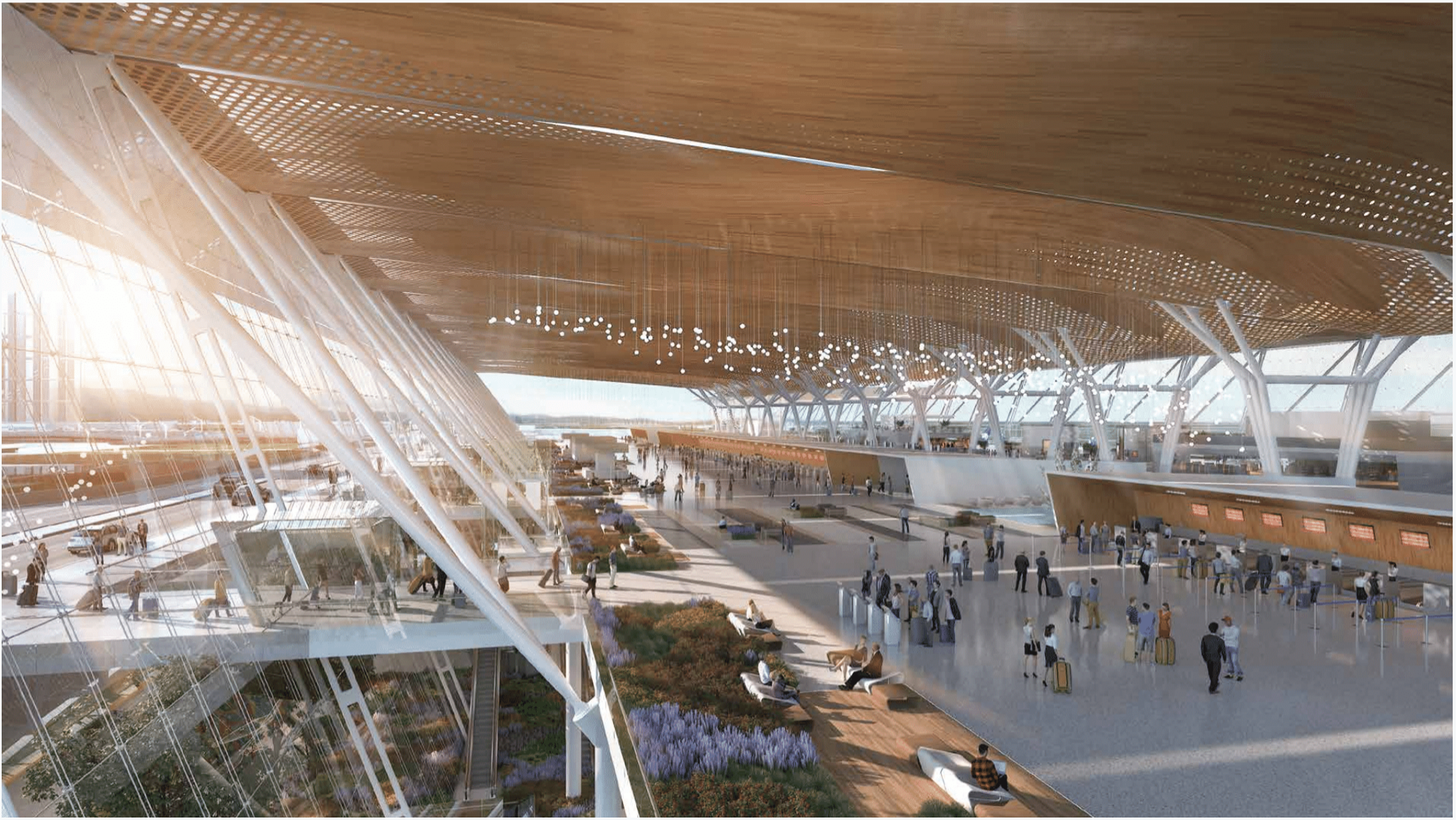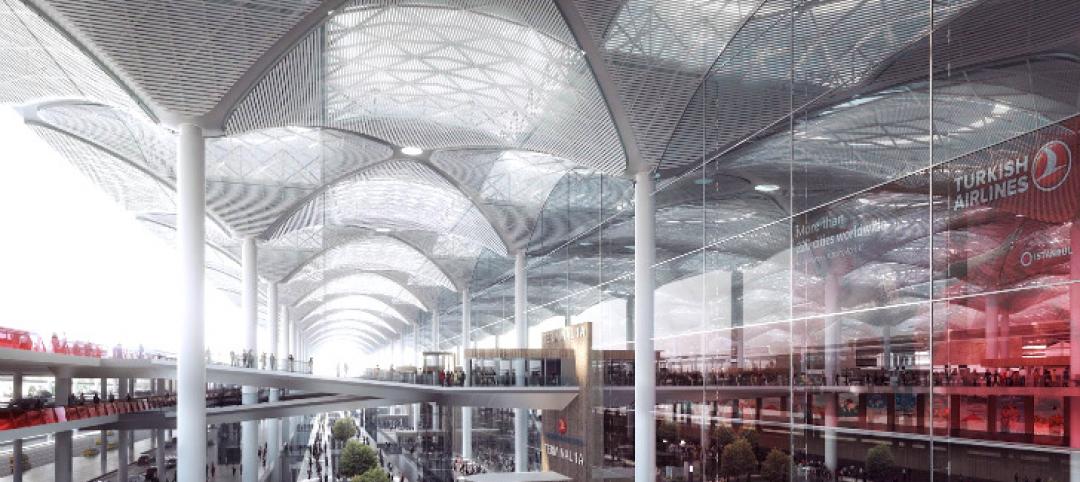Guadalajara Airport Terminal 2 will be a 30 gate, 1.2 million-sf terminal that places the passenger experience at the center of the design. It will also be one of the first net-zero airports in the world.
In order to reach this lofty goal, the terminal design includes research-backed, sustainable design strategies like solar energy harvest points, improved daylighting, insulation, glare control, shading, natural ventilation combined with economizer cooling, high performance mechanical systems, and building management systems. The design will reduce the airport’s energy use by 60% and its carbon footprint by over 90% – the proposed terminal would emit only 2,814 metric tons of CO2 each year. The facility will include landscaping that is continued from the exterior into the interior of the space.
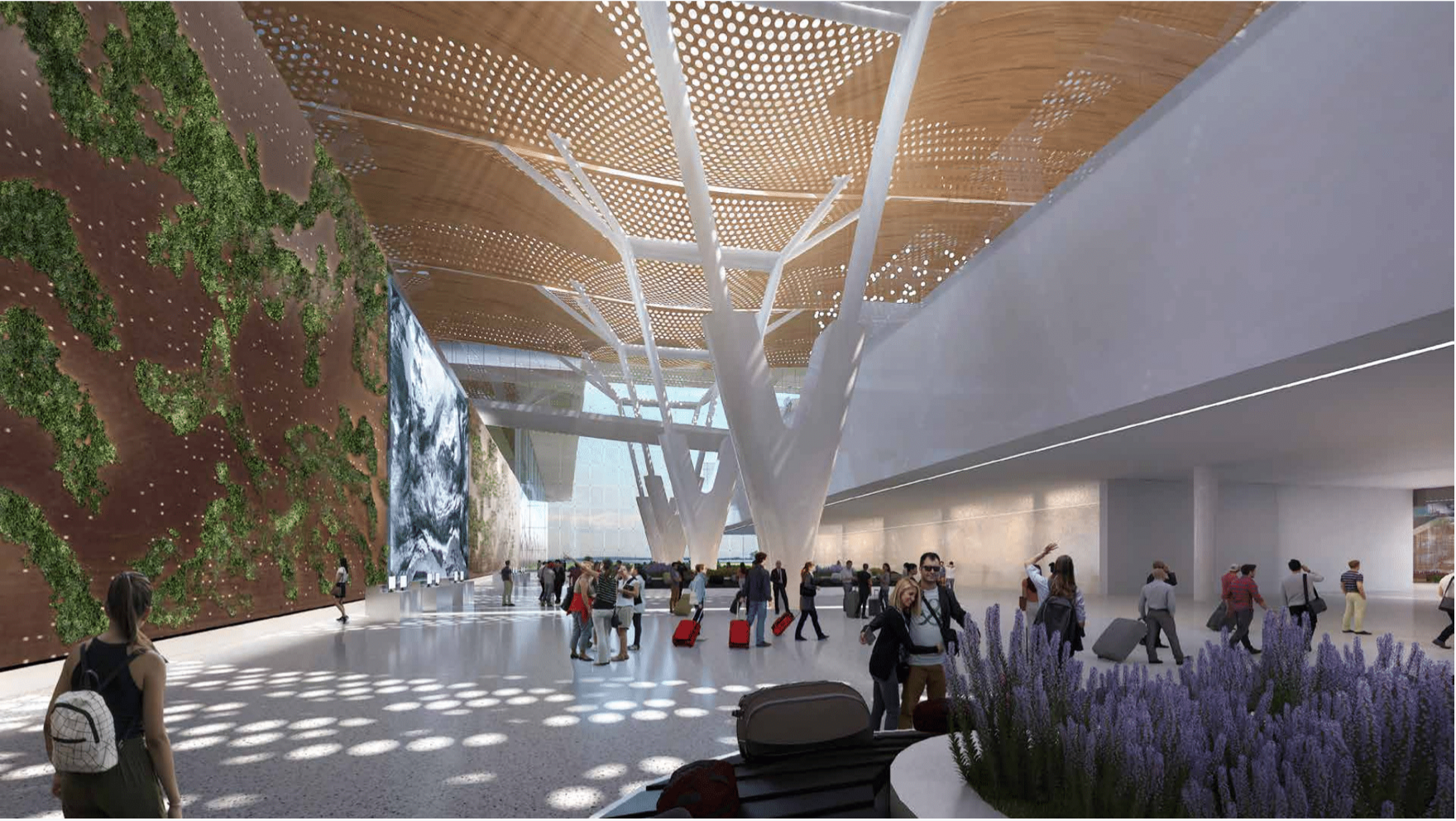
The project, which is being designed from the ground up, will include biophilic plant features, a spa, a gym, prayer and meditation rooms, and local art. Local Mexican culture was a key design element for the project, with CallisonRTKL attempting to tell a tale of regionalism through a concept dubbed “The Soul of Guadalajara." Inspiration for the terminal design is rooted in the flight of the Mexican Eagle and features such as canyon-like ceilings and agave-inspired structural elements pay homage to the surrounding area.
Two local art galleries will also be included that showcase a variety of art from abstractions to interactive media. “It’s important to us that the airport reflects the culture of its destination from departures to arrivals,” said Liliana Bernardis, Senior Associate in CRTKL’s Mexico City office, in a release. “We want passengers to feel entrenched in local art and landscaping every step of the way.”
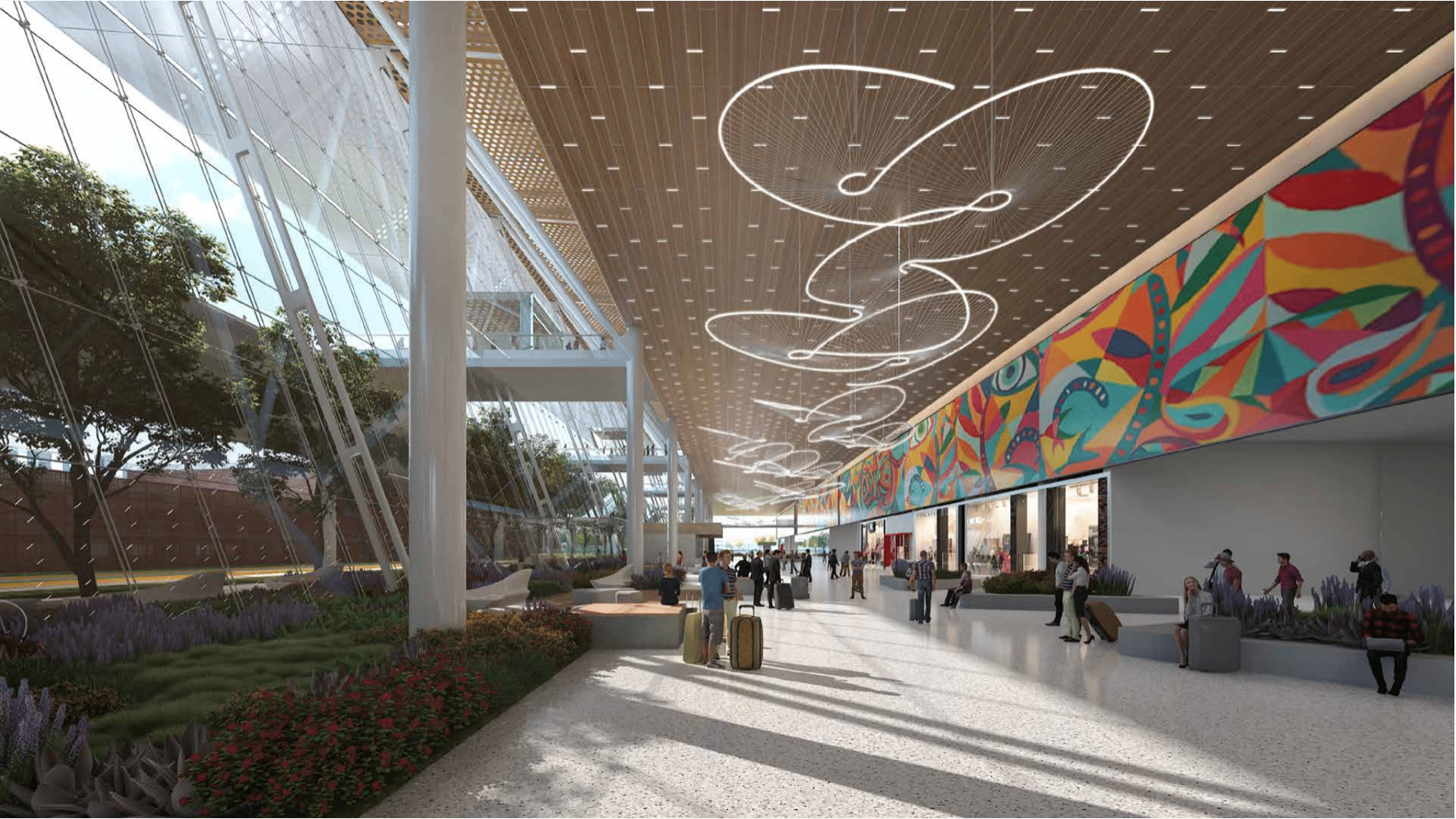
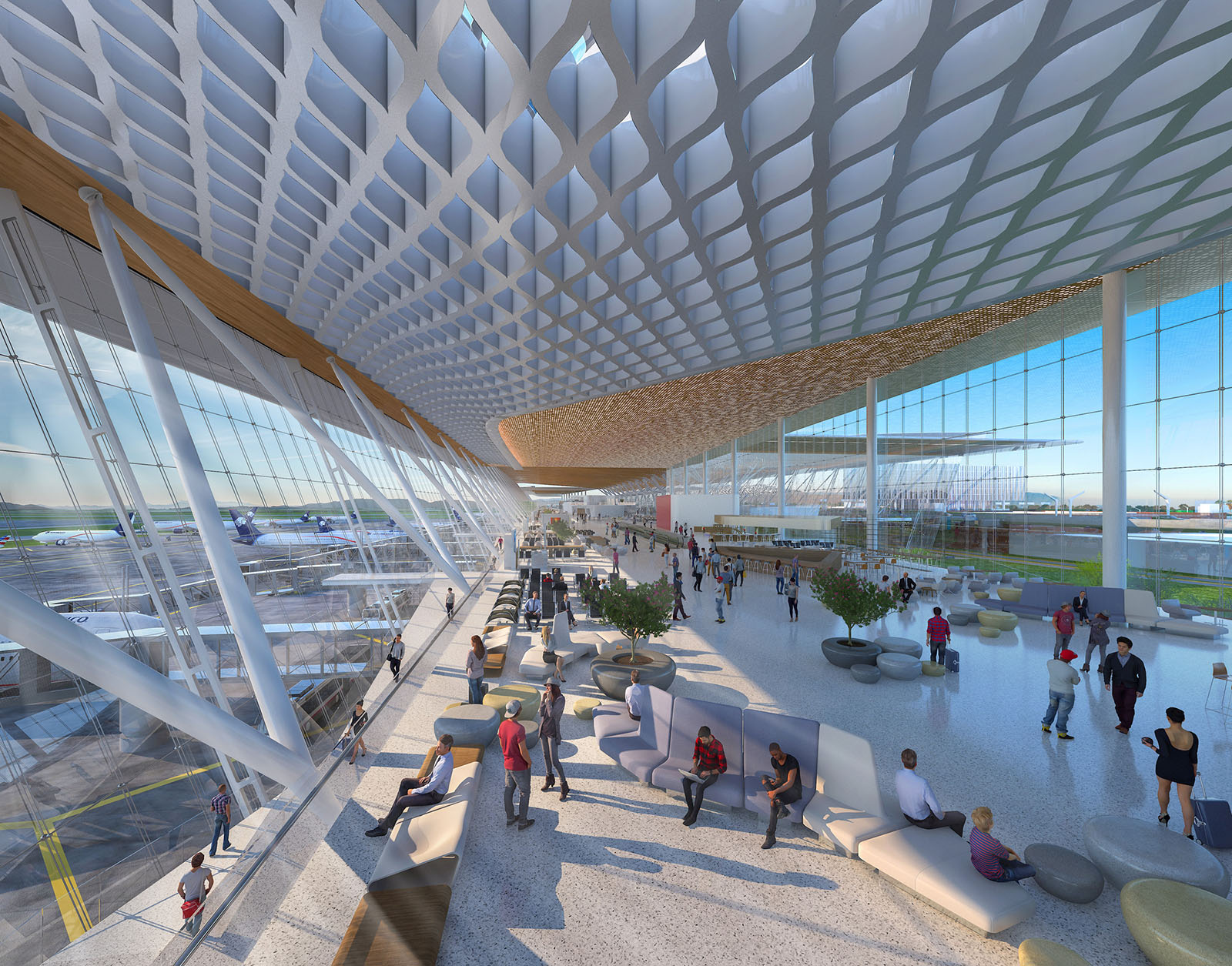
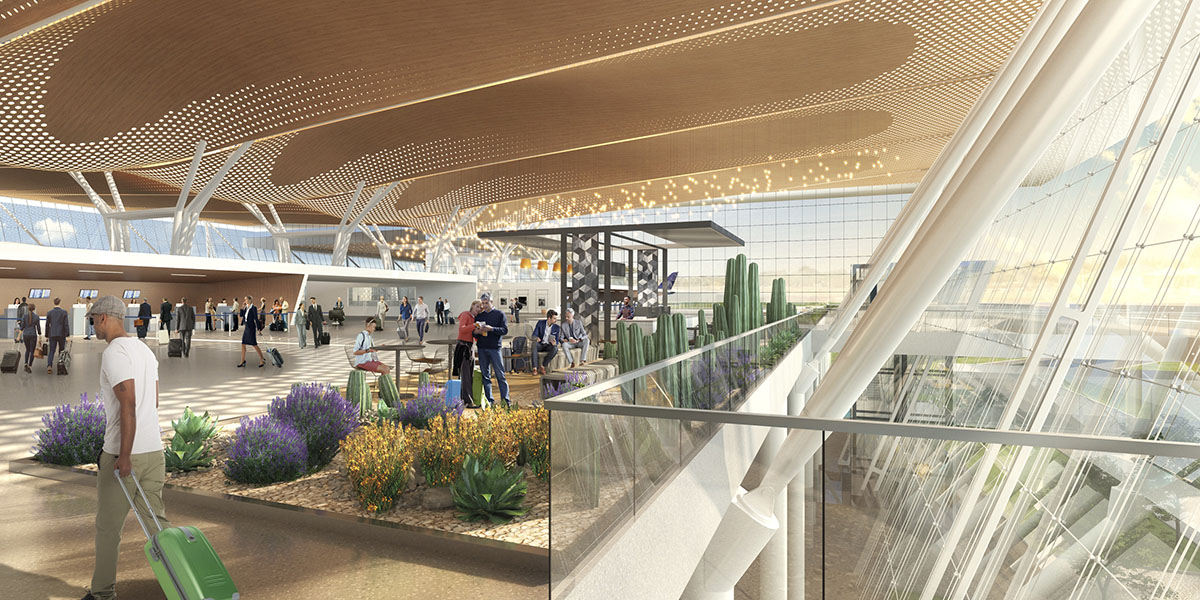
Related Stories
| Jun 2, 2014
Parking structures group launches LEED-type program for parking garages
The Green Parking Council, an affiliate of the International Parking Institute, has launched the Green Garage Certification program, the parking industry equivalent of LEED certification.
| May 29, 2014
7 cost-effective ways to make U.S. infrastructure more resilient
Moving critical elements to higher ground and designing for longer lifespans are just some of the ways cities and governments can make infrastructure more resilient to natural disasters and climate change, writes Richard Cavallaro, President of Skanska USA Civil.
| May 23, 2014
Top interior design trends: Gensler, HOK, FXFOWLE, Mancini Duffy weigh in
Tech-friendly furniture, “live walls,” sit-stand desks, and circadian lighting are among the emerging trends identified by leading interior designers.
| May 20, 2014
Kinetic Architecture: New book explores innovations in active façades
The book, co-authored by Arup's Russell Fortmeyer, illustrates the various ways architects, consultants, and engineers approach energy and comfort by manipulating air, water, and light through the layers of passive and active building envelope systems.
| May 19, 2014
What can architects learn from nature’s 3.8 billion years of experience?
In a new report, HOK and Biomimicry 3.8 partnered to study how lessons from the temperate broadleaf forest biome, which houses many of the world’s largest population centers, can inform the design of the built environment.
| May 13, 2014
19 industry groups team to promote resilient planning and building materials
The industry associations, with more than 700,000 members generating almost $1 trillion in GDP, have issued a joint statement on resilience, pushing design and building solutions for disaster mitigation.
| May 11, 2014
Final call for entries: 2014 Giants 300 survey
BD+C's 2014 Giants 300 survey forms are due Wednesday, May 21. Survey results will be published in our July 2014 issue. The annual Giants 300 Report ranks the top AEC firms in commercial construction, by revenue.
| Apr 29, 2014
USGBC launches real-time green building data dashboard
The online data visualization resource highlights green building data for each state and Washington, D.C.
| Apr 22, 2014
Bright and bustling: Grimshaw reveals plans for the Istanbul Grand Airport [slideshow]
In partnership with the Nordic Office of Architecture and Haptic Architects, Grimshaw Architects has revealed its plans for the terminal of what will be one of the world's busiest airports. The terminal is expected to serve 150 million passengers per year.
| Apr 9, 2014
Steel decks: 11 tips for their proper use | BD+C
Building Teams have been using steel decks with proven success for 75 years. Building Design+Construction consulted with technical experts from the Steel Deck Institute and the deck manufacturing industry for their advice on how best to use steel decking.


